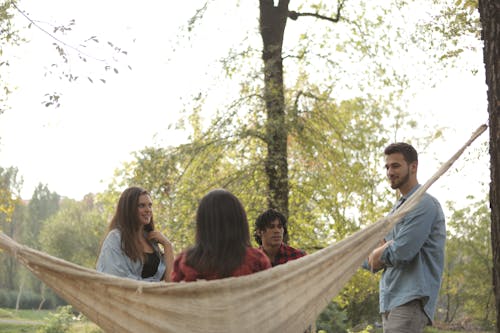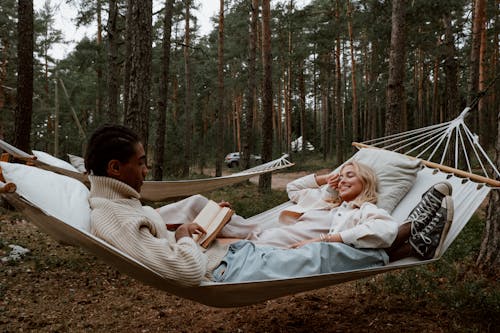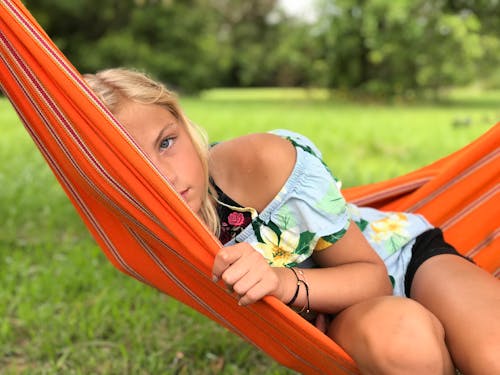
Are Hammocks Safe?
Hammocks have been around for thousands of years – on boats, as beds, for camping or simple leisure by the pool or patio. In some parts of the world, hammocks are still used daily as their place to sleep and are known to be quite comfortable and good for posture if hung right. They are continually being developed to be safer and to protect their users from the elements.
Hammocks are generally fun-filled and harmless, and while they undergo testing and come with recommended guidelines, accidents still can occur. Measures can be taken to ensure your safety when using a hammock, and we have explored these so you can be informed on how to best protect yourself. When it comes to using a hammock, be smart and always put your safety first.
How common are hammock injuries?
While there are no definitive statistics on how many injuries are acquired as a result of using hammocks, the reality is accidents occasionally occur, and sometimes these can be quite serious. Generally, they are freak accidents but are known to happen because of the following reasons but aren’t limited to:
- Children being unsupervised.
- Improper use of the hammock.
- Hammocks being hung on a dead tree.
- Hammocks being set up incorrectly.
Is it safe to sleep in a hammock?
Without a doubt, sleeping in a hammock is different than sleeping in a bed, but some people prefer the cocooning and rocking feeling. If your hammock is set up properly then yes it is safe to sleep in, and people often do so when they go camping. However, if you are prone to back, spinal or neck issues, or are considering using a hammock as a long-term sleeping option, seek advice from your medical practitioner.
Are hammocks safe for babies?
Red Nose Australia recommends that babies only sleep in cots that meet Australian guidelines from birth. A hammock may cause a baby’s neck to flex forward and impede their airway.
While some parents choose to use a hammock, a baby should never be left unsupervised, and the hammock should be as close to the ground as possible.
Is it possible to suffocate in a hammock?
It is near impossible for adults to suffocate in any type of hammock. However, suffocation is a real risk for babies, especially when they start to roll. It is a real possibility that if they roll over and cannot roll back that they block their airway.
Can hammocks cause back problems?
Sleeping in a hammock is different for everyone. It can be exceptionally comforting for people who suffer insomnia, or cannot find comfort in a bed. For others, a hammock could aggravate back issues you are already facing, especially if it isn’t hung right. Generally, sleeping in a hammock reduces pressure on your spine, however, if your medical practitioner doesn’t see it as a good fit for you, follow their advice.
What can you do to make sure your hammock is safe?
There are plenty of steps that you can undertake to ensure the safe use of your hammock. While hammocks are relatively uncomplicated to put together and upkeep, following these steps can give you the peace of mind that you are safe while relaxing.
Choose sturdy trees
It’s imperative that you check the integrity of your choice of trees before hanging your hammock. Never hang it on a dead tree as this is inviting an accident to occur. The trees need to be sturdy and be able to hold the recommended weight of your hammock.
Follow manufacturers set-up guidelines
Always read and follow the manufacturer’s guidelines and instructions for setting up and using your hammock. These are in place not only for your protection but also to extend the life of the hammock. If you are still unsure of the process after reading the instructions, there are plenty of online videos and professional installers that can take you step-by-step through the process.
Fasten your hammock correctly
Whether fastening your hammock to trees or a frame, ensure you have the recommended hardware to attach it correctly. Often, everything you need either comes with the hammock or is written clearly in the instructions. Double-check that your attachments aren’t loose and if you are unsure, ask someone else to check them for you.
Inspect before using
Check all the connection points, ropes and your hammock canvas before sitting or lying in it. If there are any tears, fraying, holes, UV fading, weakness, damaged or lose pieces, they can affect the integrity of the hammock and shouldn’t be used.
Supervise children
Babies and children should never play or sleep in a hammock unsupervised. While they can be a fun place to play, read or rest, unsupervised children can become tangled in hammock strings or topple off and obtain injuries. As mentioned previously, babies and children should never sleep unsupervised in a hammock.
Never repair a hammock
Regardless of the type of damage you find on a hammock, you should never repair it and should always throw it out.
Don’t jump on a hammock
It may seem obvious but never jump on a hammock. Hammocks sway, and the only result from jumping on a hammock is injury. When getting in and out of a hammock, sit and shuffle into it rather than jumping in and out.
Follow weight guidelines
Hammocks come in a range of sizes that handle different levels of weight. Ignoring weight guidelines will affect the credibility of the material and could cause weakness and in turn, injury. Weight capacity is usually found on the strap.
Hanging distance
Part of hanging your hammock correctly is doing so at the recommended and correct distance. If it is stretched too much, it is likely to tip. If it isn’t stretched far enough, it will sag and cause you to hit the ground.
Protecting the Environment
While self-safety is paramount, we cannot talk about hammock safety without considering the protection of trees. With the increase of hammock usage, especially because of the portability of them, many bushwalkers use hammocks to rest overnight. This means more people are attaching them to trees. Tree damage is usually minimal, over time screws and ropes will leave scarring on the tree and make them susceptible to disease. Using hammock straps or stands can prevent damage to and provide safety to the trees.


Questions
- Should I avoid using a hammock if I have children?
There is no need to avoid using a hammock when you have children. As long as you supervise your children around it and it is appropriately secured, it should be safe to use.
- Is it safe to use hammocks indoors
Yes, it is safe to use hammocks indoors. You must follow the manufacturers instructions and ensure what you’re hanging it from meets the weight requirements and can bear the load.
- Do I need a professional to hang my hammock to ensure it’s safe?
There are no requirements to use a professional to hang your hammock. If you follow the manufacturer’s advice and instructions, it should be safe to use. However, if you feel unsure and lack confidence in doing it yourself, then the better choice is to see the guidance of someone with experience.
- Can I set my hammock up without using the instructions?
To ensure that your hammock is safe, it is essential to use the instructions to hang your hammock. While with time, you will know how to put it together, checking off a checklist to make sure all the pieces are in place will everything is safely attached.